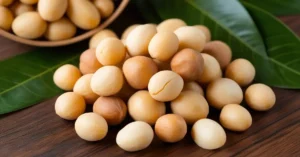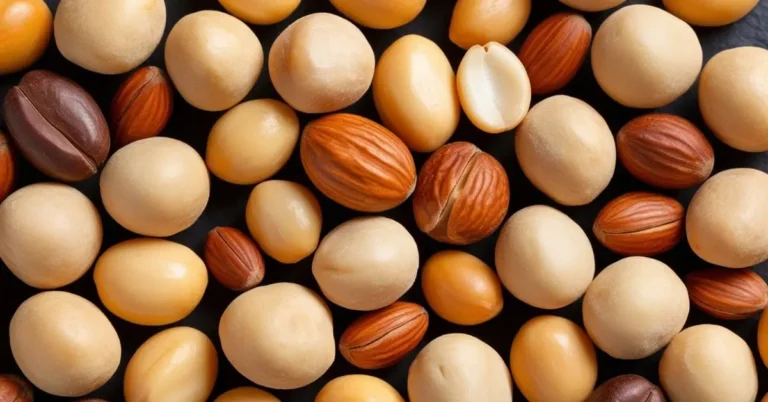Macadamia nuts, often referred to as the “queen of nuts,” are a premium nut variety known for their rich, buttery flavor and exceptional nutritional value. Originating from the subtropical rainforests of Australia, these nuts have gained global recognition for their culinary versatility, health benefits, and economic importance. In this article, we will delve into the history, cultivation, nutritional profile, health benefits, economic impact, and challenges associated with macadamia nuts. This comprehensive exploration will highlight why macadamia nuts are not only a luxurious treat but also a significant agricultural product.
Historical Background
Macadamia nuts are native to Australia, specifically the eastern coastal regions of Queensland and New South Wales. The genus Macadamia includes several species, but Macadamia integrifolia and Macadamia tetraphylla are the two species primarily cultivated for their edible nuts. These trees were first discovered by European botanists in the mid-19th century, and the genus was named after Dr. John Macadam, a Scottish-Australian chemist and physician.
The indigenous Australians, known as the Aboriginal people, were the first to recognize the value of macadamia nuts, incorporating them into their diet for thousands of years. The nuts were traditionally harvested and consumed raw or roasted over fire. European settlers began to appreciate the nuts’ potential, and by the late 19th century, the first commercial macadamia orchards were established in Australia.
Today, macadamia nuts are cultivated in various regions around the world, including Hawaii, South Africa, Kenya, and Latin America. Despite this global cultivation, Australia remains the leading producer, responsible for approximately 30% of the world’s supply.
Cultivation and Harvesting

Macadamia trees thrive in subtropical and tropical climates with well-drained soils and consistent rainfall. The trees are relatively slow-growing, taking 7 to 10 years to produce their first significant harvest. However, once established, a macadamia tree can produce nuts for over 100 years, making them a long-term investment for farmers.
The cultivation of macadamia nuts requires careful attention to several factors:
- Climate and Soil: Macadamia trees require a warm, frost-free climate with an annual rainfall of around 1,000 to 2,000 millimeters. The soil should be well-drained, rich in organic matter, and slightly acidic.
- Irrigation and Fertilization: While macadamia trees are drought-tolerant, consistent irrigation during dry periods is essential for optimal nut production. Fertilization, particularly with nitrogen and potassium, is crucial for tree health and nut yield.
- Pest and Disease Management: Macadamia trees are susceptible to various pests and diseases, including the macadamia nut borer, root rot, and fungal infections. Integrated pest management strategies are vital for maintaining tree health and ensuring a good harvest.
- Harvesting: The nuts mature and fall to the ground between March and September, depending on the region. They are then collected, de-husked, and dried to reduce moisture content before being processed further.
Nutritional Profile
Macadamia nuts are not only prized for their taste but also for their impressive nutritional content. They are a rich source of monounsaturated fats, which are known to support heart health. A 100-gram serving of macadamia nuts provides approximately:
- Calories: 718 kcal
- Total Fat: 76 grams (of which 60 grams are monounsaturated fats)
- Carbohydrates: 14 grams
- Protein: 8 grams
- Fiber: 8 grams
- Vitamins: Rich in B-complex vitamins, particularly thiamin (B1) and niacin (B3), and a good source of vitamin E and folate.
- Minerals: High in magnesium, manganese, copper, and iron.
The high-fat content, coupled with low carbohydrate levels, makes macadamia nuts a popular choice in low-carb and ketogenic diets. Their fatty acid profile is predominantly composed of oleic acid, a monounsaturated fat similar to that found in olive oil, which is associated with reduced inflammation and improved cholesterol levels.
Health Benefits
The consumption of macadamia nuts offers several health benefits, largely due to their unique nutritional composition. Here are some key health benefits:
- Heart Health: The monounsaturated fats in macadamia nuts are beneficial for heart health. These fats can help reduce LDL (bad) cholesterol levels while increasing HDL (good) cholesterol levels. Studies have shown that regular consumption of macadamia nuts can lower the risk of cardiovascular diseases.
- Antioxidant Properties: Macadamia nuts are rich in antioxidants, including tocotrienols (a form of vitamin E) and flavonoids. These compounds help combat oxidative stress, which is linked to chronic diseases such as cancer and Alzheimer’s disease.
- Weight Management: Despite being high in calories, macadamia nuts can aid in weight management. The combination of healthy fats, fiber, and protein helps promote satiety, reducing overall calorie intake. Additionally, the fats in macadamia nuts are less likely to be stored as body fat compared to saturated fats.
- Blood Sugar Control: Macadamia nuts have a low glycemic index, meaning they cause a slow, steady rise in blood sugar levels. This makes them an excellent snack option for individuals with diabetes or those looking to manage their blood sugar levels.
- Bone Health: The high magnesium content in macadamia nuts supports bone health by aiding in calcium absorption and promoting bone density. Additionally, the manganese in these nuts plays a crucial role in bone formation.
- Brain Health: The tocotrienols found in macadamia nuts have neuroprotective properties, helping to protect brain cells from damage. This, combined with the anti-inflammatory effects of monounsaturated fats, may reduce the risk of neurodegenerative diseases.
- Skin Health: Macadamia nuts are a popular ingredient in skincare products due to their high content of palmitoleic acid, a monounsaturated fatty acid that is also found in human skin. This acid helps maintain skin hydration, elasticity, and overall health.
Economic Impact
Macadamia nuts are a high-value crop with significant economic importance, particularly in the regions where they are cultivated. The global macadamia market has experienced substantial growth in recent years, driven by increasing demand for healthy snacks, plant-based diets, and premium food products.
- Global Production and Trade: As of 2024, the global macadamia market is valued at over USD 1 billion, with major producers including Australia, South Africa, Kenya, the United States (Hawaii), and China. Australia remains the largest exporter, followed by South Africa and Kenya. The nuts are primarily exported to markets in North America, Europe, and Asia, where they are used in confectionery, baking, and as a standalone snack.
- Economic Benefits for Farmers: For farmers, macadamia nuts represent a lucrative crop, particularly in regions with suitable climates. The long lifespan of macadamia trees and the relatively high market prices for the nuts provide a stable source of income. In countries like Kenya and South Africa, macadamia cultivation has become an important part of rural development programs, providing employment and improving livelihoods.
- Value-Added Products: The versatility of macadamia nuts has led to the development of a wide range of value-added products, including macadamia oil, butter, milk, and flour. Macadamia oil, in particular, is prized for its high smoke point and rich flavor, making it a popular choice for cooking and skincare products.
- Sustainability and Environmental Impact: Macadamia cultivation is generally considered environmentally sustainable. The trees require minimal pesticides and fertilizers compared to other crops, and their deep root systems help prevent soil erosion. Additionally, macadamia trees can be integrated into agroforestry systems, promoting biodiversity and providing ecosystem services.
Challenges in Macadamia Cultivation
Despite the numerous benefits associated with macadamia nuts, their cultivation is not without challenges. Farmers and producers face several issues that can impact production and profitability:
- Pest and Disease Pressure: Macadamia nut borers, root rot, and fungal infections are significant threats to macadamia orchards. These issues require vigilant monitoring and management, often increasing production costs.
- Climate Change: The sensitivity of macadamia trees to climate conditions makes them vulnerable to the impacts of climate change. Changes in temperature, rainfall patterns, and extreme weather events can affect nut yields and quality.
- Market Fluctuations: Like many agricultural products, macadamia nuts are subject to market fluctuations, driven by factors such as global supply and demand, currency exchange rates, and trade policies. These fluctuations can impact the income stability of farmers and producers.
- Labor-Intensive Harvesting: The harvesting of macadamia nuts is labor-intensive, requiring manual collection from the ground. In regions with high labor costs, this can significantly impact the profitability of macadamia orchards.
- Sustainability Concerns: While macadamia cultivation is generally sustainable, there are concerns about the environmental impact of expanding macadamia plantations, particularly in regions where land clearing for agriculture can lead to deforestation and habitat loss.
Conclusion
Macadamia nuts are a remarkable agricultural product with a rich history, exceptional nutritional value, and significant economic impact. From their origins in the rainforests of Australia to their status as a global commodity, macadamia nuts have captivated the world with their unique flavor and health benefits.
As demand for healthy, plant-based
foods continues to rise, the macadamia nut industry is poised for continued growth. However, addressing the challenges of pest management, climate change, and market volatility will be crucial for ensuring the sustainability and profitability of macadamia cultivation.
In conclusion, macadamia nuts are more than just a delicious treat; they are a valuable asset to the global agricultural landscape, offering benefits to farmers, consumers, and the environment alike. As research and innovation in macadamia cultivation and processing continue, these nuts will likely play an increasingly important role in the future of food and agriculture.

